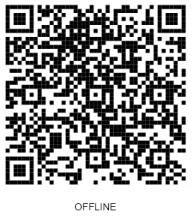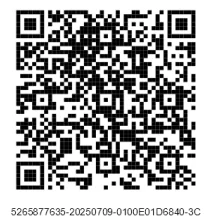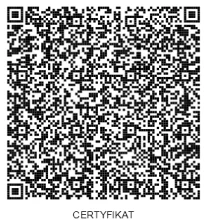A QR code on an invoice from the National e-Invoicing System (KSeF) is a two-dimensional graphic symbol representing a unique string of characters. It allows for quick verification that the document has been correctly registered in the KSeF system.
As a rule, invoices are issued and received through the National e-Invoicing System (KSeF). In some cases specified by law (Article 106gb(4) of the VAT Act), the invoice must also be provided to the buyer in another agreed-upon way – outside KSeF. In such situations, the document must contain a special verification code (QR code) confirming its compliance with the system.
A structured invoice should be marked with a QR code each time an invoice visualization is generated – both in the application provided by the Ministry of Finance and in commercial invoicing software.
Depending on how the invoice is issued in KSeF (online/offline), the visualization of the invoice will include:
QR codes of CODE I category (KSeF invoice number / OFFLINE) ensure access to the invoice and enable verification of the data contained in the invoice.
Below are sample graphic codes:


QR codes of CODE II category (“CERTIFICATE”) are used only for invoices issued in offline mode (offline24 / emergency mode / KSeF unavailability). They assure the recipient of the invoice’s authenticity and the integrity of its contents. They also allow verification of whether the certificate is active and whether the issuer of the invoice holds the appropriate authorization.
To generate such a code, the issuer must possess a valid KSeF certificate. Below is an example graphic code:

Invoices issued online and those issued offline but already sent to KSeF contain only CODE I (the KSeF invoice number).
Invoices issued offline but not yet sent to KSeF contain CODE I (OFFLINE) and CODE II (CERTIFICATE).
Invoices issued in the National e-Invoicing System (KSeF) can be quickly verified by scanning the QR code or clicking the provided link.
This form of access does not require system authentication.
After scanning the code or clicking the link, the user will receive access to the basic identifying information about the invoice and confirmation that the document exists in KSeF.
If verification is successful, the system will prompt for the access data required to view the invoice – as specified in the KSeF regulations.
After providing the required data, it will be possible to download the full version of the document.
When an invoice is sent to the recipient in a structured data format that does not allow direct inclusion of a verification code (e.g., a link or QR code) on the document itself, the taxpayer may use alternative delivery methods.
Along with the invoice, the following can be sent: